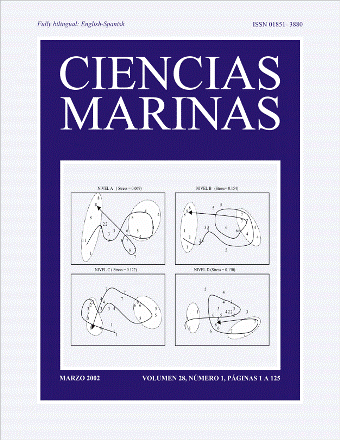Abundance and associations of two commercially important gastropods (Astraea and Haliotis) in Isla San Jeronimo, Baja California, Mexico
Main Article Content
Abstract
We present the status of Astraea (Lithopoma) undosa, A. (L.) turbanica, and Haliotis spp. in Isla San Jerónimo, Baja California, Mexico and describe the associations between the dominant flora and fauna in their habitat. Forty years ago this area was one of the main fishing areas for Astraea and Haliotis along the peninsula, but now it is overexploited. The mean density of A. undosa was 0.1 m–2 and that of A. turbanica was 0.006 m–2. Both species have a low proportion of organisms with the minimum legal size of capture. No abalones were found around the island, but few were found in the intertidal. There is a good proportion of suitable rocky habitat and food for Astraea and Haliotis. Positive associations between dominant macroinvertebrates and flora were detected. Rocky areas with vegetation are the common habitat of Kelletia sp. and Pisaster sp. (predators); and of Strongylocentrotus franciscanus, Tegula spp., and Megathura crenulata (prey); and they were positively associated. Our results suggest a negative covariation and spatial segregation between A. undosa and A. turbanica.
Downloads
Article Details
This is an open access article distributed under a Creative Commons Attribution 4.0 License, which allows you to share and adapt the work, as long as you give appropriate credit to the original author(s) and the source, provide a link to the Creative Commons license, and indicate if changes were made. Figures, tables and other elements in the article are included in the article’s CC BY 4.0 license, unless otherwise indicated. The journal title is protected by copyrights and not subject to this license. Full license deed can be viewed here.

